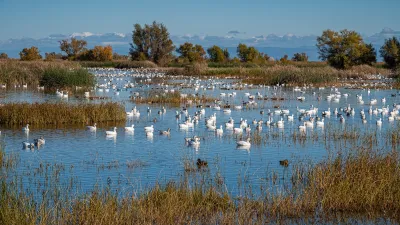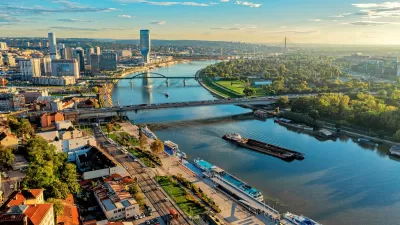A plan to restore perennial plants to agricultural land could help reduce runoff and improve water quality across the Great Lakes region.

A group of nonprofits and land trusts in the Great Lakes region is collaborating on a new effort to improve water quality by returning certain croplands to perennial vegetation to reduce runoff and limit erosion.
According to an article in Midland Daily News, “Using state-of-the-art watershed modeling paired with local insights, the Greater Lakes Promise team selects high priority lands for conservation. These lands are then permanently protected with funding generated by individuals and businesses who live and work in the region.”
The restored land will enhance carbon storage and reduce pollution. “The team will develop a modeling framework to target areas with the highest potential for phosphorous loading, along with the lowest predicted land value, in order to maximize the overall return on investment and make sure funds are put to good use.”
If successful, the project offers a promising approach to the permanent conservation of ecologically important areas.
FULL STORY: New regional partnership to improve Great Lakes water quality

Study: Maui’s Plan to Convert Vacation Rentals to Long-Term Housing Could Cause Nearly $1 Billion Economic Loss
The plan would reduce visitor accommodation by 25,% resulting in 1,900 jobs lost.

North Texas Transit Leaders Tout Benefits of TOD for Growing Region
At a summit focused on transit-oriented development, policymakers discussed how North Texas’ expanded light rail system can serve as a tool for economic growth.

Why Should We Subsidize Public Transportation?
Many public transit agencies face financial stress due to rising costs, declining fare revenue, and declining subsidies. Transit advocates must provide a strong business case for increasing public transit funding.

How to Make US Trains Faster
Changes to boarding platforms and a switch to electric trains could improve U.S. passenger rail service without the added cost of high-speed rail.

Columbia’s Revitalized ‘Loop’ Is a Hub for Local Entrepreneurs
A focus on small businesses is helping a commercial corridor in Columbia, Missouri thrive.

Invasive Insect Threatens Minnesota’s Ash Forests
The Emerald Ash Borer is a rapidly spreading invasive pest threatening Minnesota’s ash trees, and homeowners are encouraged to plant diverse replacement species, avoid moving ash firewood, and monitor for signs of infestation.
Urban Design for Planners 1: Software Tools
This six-course series explores essential urban design concepts using open source software and equips planners with the tools they need to participate fully in the urban design process.
Planning for Universal Design
Learn the tools for implementing Universal Design in planning regulations.
City of Santa Clarita
Ascent Environmental
Institute for Housing and Urban Development Studies (IHS)
City of Grandview
Harvard GSD Executive Education
Toledo-Lucas County Plan Commissions
Salt Lake City
NYU Wagner Graduate School of Public Service





























